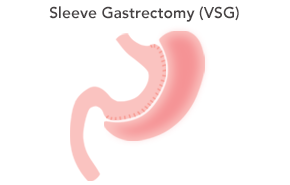
The Science of Supplementation: Digestion After WLS
January 8, 2018I hope you have been able to review part one of this series, “The Science of Supplementation: Digestion Prior to WLS” article. It provides us with a breakdown of the overall digestion process prior to weight loss surgery (WLS).
However, knowing where and how nutrients are absorbed doesn’t necessarily help us know how much vitamins and minerals we need to ingest, either through food or supplements. This is where the dietary reference intakes come in handy.
The Food and Nutrition Board of the Institute of Medicine, a branch of the National Academy of Sciences, Engineering, and Medicine helps set the dietary reference intakes (DRI) for many nutrients. The Recommended Dietary Allowance (RDA) is the average daily amount of a nutrient needed to meet the needs of 97-98% of healthy people.(1)
An adequate intake (AI) is given for a nutrient when there is not enough evidence to establish an RDA; therefore a level is chosen that is believed to provide an adequate amount.(1) The tolerable upper intake level (UL) is the maximum amount recommended before one might begin to experience adverse effects.(1)
More than 20% of patients have multiple nutritional deficiencies even before they ever have WLS. It is an “often-overlooked paradox that abundance of food and good nutrition are not one and the same,” says bariatric surgeon Kimberley Steele, MD, PhD.
While not all surgeons require their patients to reach normal levels before surgery, there is more and more emerging evidence that correcting deficiencies prior to surgery can lead to better outcomes after surgery.
Digestion After WLS
And how does this affect us as WLS patients after surgery? Let’s start with the basic flow of digestion and how it is altered by WLS. For adjustable gastric band (AGB) patients, this process of digestion is not altered. The biggest reason why AGB patients may need to supplement is overall decreased intake of food, leading to an overall decreased intake of nutrients.
Sleeve Gastrectomy (VSG)

For sleeve gastrectomy (VSG) patients, the process that occurs in the intestines is not disturbed; however, the breakdown of nutrients in the stomach is altered due to decreased levels of hydrochloric acid (HCl) and intrinsic factor (IF). This decrease comes from the removal of a majority of the body of the stomach. The decrease in HCl specifically affects certain micronutrients, including calcium, iron, zinc, copper, magnesium, folic acid, and selenium, that all require an acidic environment for absorption. Vitamin B12 is also affected, as the portion of the stomach that is removed is responsible for producing IF that aids in the absorption of vitamin B12 in the small intestines.
Roux-en-Y (RNY)

In Roux-en-Y gastric bypass (RYGB) patients, both the stomach digestive process and the path of absorption are both altered. In order to create the pouch, nearly 90% of the stomach is bypassed. Because of the location of the new pouch in the upper portion of the stomach, it is not likely to produce HCl or IF, therefore affecting the digestion and absorption of the same micronutrients as SG.
In addition, a portion of the small intestines is bypassed. In each patient, the length of the bypassed limb of intestine can vary. In most patients, the first part of the small intestines, the duodenum, is bypassed. The duodenum is the site of absorption for many micronutrients, including but not limited to calcium, magnesium, iron, iron, thiamine and the fat-soluble vitamins A, D, E and K. The second part of the small intestines is called the jejunum, and part of this can also be bypassed. The jejunum is the site of absorption for the same nutrients as the duodenum, as well as additional trace minerals, lipids (fat), monosaccharides (simple carbohydrates), and amino acids and small peptides (simple proteins).
Duodenal Switch (DS)

For duodenal switch (DS) patients, imagine combining the digestive effects of both the sleeve and bypass. These patients are particularly at risk of deficiencies for the fat-soluble vitamins A, D, E and K, as these are best absorbed in the duodenum and jejunum. DS patients are encouraged to take dry supplements of fat-soluble vitamins in order to better absorb the nutrients.
So when we are told as post-op WLS patients that we need to take supplements for life, there is good science supporting that statement. Not all deficiencies occur early on after WLS, so we must use preventative measures to avoid harming our health in the long term.
This concludes part 2 of this multi-part series. Stay tuned as we dive into individual nutrients next, including the signs and symptoms of deficiency and toxicity, and the recommended amounts of supplementation for the different surgery types. Up next is some water-soluble B vitamins!
References
- https://ods.od.nih.gov/Health_Information/Dietary_Reference_Intakes.aspx
- http://www.hopkinsmedicine.org/news/media/releases/nutritional_deficiencies_common_before_weight_loss_surgery

 | ABOUT THE AUTHOR Bec McDorman, MS, RDN discovered her passion for health and wellness after undergoing Roux-en-Y Gastric Bypass surgery in 2010 to lose more than 100lbs. Bec has received her masters from Cal Poly Pomona and completed her dietetic internship at Johns Hopkins Bayview Medical Center. She has reached her goal of being a registered dietitian so she can help pre- and post-op bariatric patients with their journey.Read more articles by Bec! |



